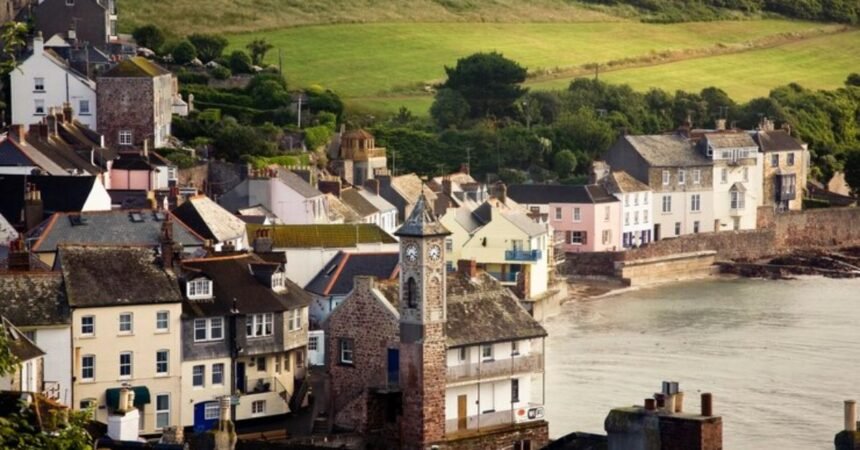Introduction
The name Bangar Granshough Belfast may not be immediately familiar to all, but it represents a significant part of Northern Ireland’s historical and cultural fabric. Understanding the relevance of Bangar Granshough is crucial for those looking to delve deeper into Belfast’s history, explore its urban landscape, or even engage in discussions about local development.
This article offers a comprehensive overview of Bangar Granshough Belfast, defining key concepts, explaining its importance, and exploring how it fits within the city’s broader narrative. We’ll discuss its historical roots, practical applications, and challenges while offering solutions for preserving and enhancing its relevance.
Detailed Explanation of Bangar Granshough Belfast
What Is Bangar Granshough Belfast?
Bangar Granshough is a term that may refer to a locality, district, or historically significant area in or around Belfast, Northern Ireland. While the exact origins of the term might be somewhat obscure, it potentially traces back to geographic or historical landmarks tied to the city’s industrial or agricultural past. Given Belfast’s rich history of development, Bangar Granshough could relate to an area of interest in urban or rural history.
Belfast has long been a focal point of economic, cultural, and social change in Northern Ireland, and many of its neighborhoods and districts have roots deeply embedded in its industrial heritage. Bangar Granshough likely represents one of these areas, though specific records of its establishment and evolution may still need to be fully uncovered.
The Historical Context of Belfast
Belfast has undergone significant transformations over the past two centuries. Known for its prominence in shipbuilding (with the Titanic being the most famous ship built in the city), linen production, and manufacturing. Areas like Bangar Granshough are a reflection of this legacy, with many districts playing important roles in supporting the city’s economic growth during that period.
Importance and Benefits of Bangar Granshough Belfast
Preserving Local History
Understanding Bangar Granshough Belfast is crucial for preserving local history. Like many areas within the city, Bangar Granshough may carry stories of industrial growth, migration, and community development. By studying and recognizing its significance, residents and historians alike can ensure that the history of Bangar Granshough is remembered and celebrated.
Enhancing Belfast’s Cultural Narrative
Every locality in Belfast, including Bangar Granshough, contributes to the city’s broader cultural narrative. Belfast’s identity is a mosaic of its many neighborhoods, and understanding the unique contributions of areas like Bangar Granshough adds depth to this narrative. The preservation and promotion of such areas provide visitors and locals alike with a richer, more nuanced understanding of the city’s history.
Supporting Tourism
Tourism plays an important role in Belfast’s economy, and areas like Bangar Granshough have the potential to become focal points for historical tours and cultural tourism. While Titanic Belfast and other famous landmarks may draw the most attention, districts with historical significance, such as Bangar Granshough, can attract those interested in exploring less-known aspects of the city.
Strengthening Community Identity
For residents of Belfast, local neighborhoods and districts are central to their sense of identity. Bangar Granshough, like many other areas, may carry unique traditions, community stories, or cultural practices that strengthen social bonds among residents. Reviving or preserving these aspects of local history can foster pride in the community and encourage continued engagement with Belfast’s heritage.
Applications and Use Cases of Bangar Granshough Belfast
Historical Research and Academic Studies
One of the primary applications of Bangar Granshough lies in academic research and historical studies. Historians and researchers interested in Belfast’s industrial past, urban development, or social history might find Bangar Granshough to be a valuable case study. By examining records, archives, and oral histories related to Bangar Granshough, researchers can uncover insights into the city’s transformation over time.
Example: Industrial Growth in the 19th Century
A researcher investigating the industrialization of Belfast in the 19th century might focus on Bangar Granshough to understand the role smaller districts played in supporting larger industries such as shipbuilding or textiles. Historical documents could reveal how the area evolved from a rural or residential space to one tied to manufacturing or trade.
Urban Development and Preservation Efforts
Bangar Granshough Belfast can also be integrated into contemporary urban development projects. Many cities are balancing modernization with the preservation of historical areas, ensuring that the character and history of districts like Bangar Granshough are not lost amidst rapid urbanization.
Example: Heritage-Led Development
A developer working on a new housing project or commercial development in Bangar Granshough could use a heritage-led approach, incorporating historical architecture or storytelling into the project. By doing so, they preserve the area’s identity while providing modern amenities.
Cultural Tourism and Local Events
With the right promotion and infrastructure, Bangar Granshough could become a notable stop on Belfast’s cultural tourism map. Visitors interested in Belfast’s lesser-known areas would find value in learning about Bangar Granshough through walking tours, exhibitions, or local events.
Example: Guided Historical Walks
Historical walking tours could include Bangar Granshough, offering stories about its past, the industries or families that once defined the area, and its role in Belfast’s growth. With plaques, signage, and knowledgeable guides, these tours would enhance tourists’ understanding of the city’s rich history.
Community Projects and Revitalization
Neighborhoods like Bangar Granshough could also be revitalized through community projects. Local historical societies, cultural groups, or residents could come together to document the area’s history, organize public events. Or even launch community-led development initiatives that celebrate Bangar Granshough’s unique identity.
Example: A Community Heritage Project
Residents of Bangar Granshough could initiate a community heritage project to collect oral histories, photographs. And archival materials that tell the story of their neighborhood. This project could culminate in an exhibition or published collection that shares the area’s significance with a broader audience.
Challenges and Solutions
Lack of Historical Documentation
One of the primary challenges in fully understanding the significance of Bangar Granshough is the potential lack of comprehensive historical documentation.
Solution: Archival Research and Community Input
To overcome this challenge, researchers and local communities can collaborate to fill these gaps. Archival research, combined with oral histories from residents, can help build a fuller picture of Bangar Granshough. Engaging the community is particularly important, as they may hold key information not available in traditional archives.
Balancing Modern Development with Preservation
Another challenge is ensuring that modern development in Bangar Granshough does not erase its historical identity. Belfast, like many cities, is under pressure to modernize. And this can sometimes come at the cost of losing historical sites or altering the character of older districts.
Solution: Heritage-Led Urban Planning
A solution to this challenge is adopting a heritage-led approach to urban planning. Developers, historians, and city planners can work together to ensure that development in Bangar Granshough preserves its historical features. Perhaps by maintaining architectural styles or dedicating spaces to historical exhibitions.
Engaging the Community in Preservation Efforts
Engaging the local community in preservation efforts can sometimes be difficult. Particularly if residents are not aware of their neighborhood’s historical significance. Lack of awareness or interest could hinder efforts to preserve areas like Bangar Granshough.
Solution: Educational Campaigns and Local Events
Educational campaigns, workshops, and local events can help raise awareness about Bangar Granshough. Schools, community centers, and historical societies can collaborate on projects that highlight the area’s history, encouraging residents to take an active role in its preservation.
Conclusion
Bangar Granshough Belfast is a potential gem within the broader historical and cultural tapestry of Northern Ireland. Whether it is tied to the city’s industrial past or represents an important residential district. Bangar Granshough holds significance that deserves recognition and preservation. By studying, revitalizing, and promoting areas like Bangar Granshough. Belfast can ensure that its history is not only preserved but also integrated into the city’s future.
As Belfast continues to grow and evolve, maintaining a connection to its roots through areas like. Bangar Granshough ensures that future generations will have a richer understanding of the city’s past. Through thoughtful research, development, and community engagement. Bangar Granshough can take its place as a key part of Belfast’s cultural identity.
FAQs
1. What is Bangar Granshough Belfast?
Bangar Granshough Belfast likely refers to a historical district or landmark in Belfast. Northern Ireland, that carries significance tied to the city’s development.
2. Why is Bangar Granshough significant?
Bangar Granshough holds importance as part of Belfast’s urban and industrial growth, contributing to the city’s broader historical narrative.
3. How can Bangar Granshough benefit Belfast?
By preserving its historical significance, Bangar Granshough can enhance local tourism. Cultural identity, and community engagement, while contributing to heritage-led development projects.
4. What challenges are associated with Bangar Granshough?
Challenges include the lack of historical documentation. Potential erasure due to modern development, and limited community awareness of the area’s historical value.
5. How can these challenges be addressed?
Solutions include archival research, engaging the community, heritage-led urban planning, and educational campaigns to raise awareness about the area’s significance.




